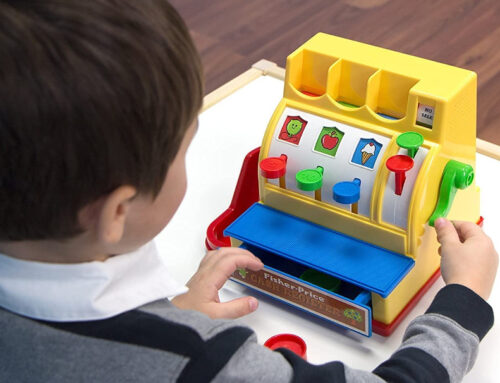Example One, Space Exploration
“To Infinity and Beyond!” Many toddlers and preschoolers have a fascination with complex subjects such as space exploration, planets, or a healthy obsession with the beloved character Buzz Lightyear from the movie Toy Story. But while this is a popular topic of interest for the constantly changing and developing mind of a two, three or four-year-old, the concept of space may be too abstract or daunting to grasp. In addition, what a two-year-old can comprehend is very different than what a four-year-old comprehends (whether they are typically or non- typically developing). So, how do you incorporate your child’s love of Buzz Lightyear or planets into manageable learning activities that will assist his/her development? This blog will give parents tips to help them explain space concepts to their child in a way they can understand and grasp more easily.
The first and most important rule is to keep concepts simple and concrete for your littlest learners; as well as creating “hands-on” activities that will support the space concept that you are trying to teach. Two-year-olds are very sensory-based learners (relying on all five senses to understand the world around them). Creating detailed sensory space bins based on one or two concepts is the most effective way of explaining a topic as evasive as space. A great example of this is using model magic to illustrate the surface/color of the moon and using various textured rocks (i.e. smooth rocks, pumice stones, etc) to create “craters” on this area. By using clear and accurate pictures, a child can make comparisons between their creation and what a “real” moon looks like. This activity also fosters fine motor development, relational play skills, and cognitive thinking concepts by linking tactile sensory objects into components of the moon’s atmosphere and makeup.

If children are preschool age, have some ideation/pretend play skills, and have an interest in Buzz Lightyear, turn them into astronauts! This can be a fun hands-on experience that can be as basic or elaborate as needed — depending on the amount of time/materials parents have and the child’s imagination abilities. Paint a cardboard box grey and cut out holes for the window and use recyclable materials (dishwashing gloves, liter soda bottles for a helmet, etc) for a spacesuit. Explain to the child why they need to use the helmet in space (“the air is different in space; the helmet helps you breathe and keeps you safe”). Use a bunch of pillows or a trampoline to explain how the moon’s atmosphere is different; the absence of gravity makes you bounce. Have them explore different textured “space food” and that real astronauts need to “change the food” to be able to eat it on a rocket ship due to the absence of gravity (or use “ no air” as an easier word choice). Show your child pictures of the original food and have them guess which “space food texture” matches.
Once a child is in kindergarten, they have a greater concept of time, social/environmental norms, and how our world can change. A great option would be taking a child on a field trip to The Adler Planetarium with some friends. Chicago is fortunate to have a great space museum close to home. The planetarium would teach children concepts such as constellations and planetary atmospheres and it would be a great family bonding activity, as well!

Blue Bird Day fosters socialization, sensory regulation, and pre-academic learning in children ages 2-7 years in therapeutic rotations that simulate preschool and kindergarten settings. Our compassionate therapists practice a relationship-based and family-centered approach, provide parent training, and collaborate on goals and individualized intensive treatment plans for your child.
We believe in a collaborative and multi-disciplinary team approach to therapy. A team of occupational therapists, speech-language pathologists, dietitians, developmental therapists, behavioral therapists, physical therapists, and therapeutic assistants are created for each child to ensure child and family are fully supported and the best possible results are achieved.
Options for individualized, group and virtual therapy sessions are available as well.
Want to learn more or you have a specific question? Feel free to connect with us here!



